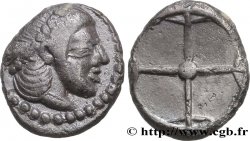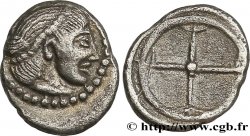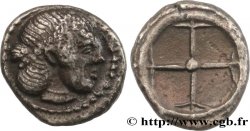v23_0029 - SICILIA - SIRACUSA Tétradrachme
MONNAIES 23 (2004)
起拍价 : 1 600.00 €
估价 : 3 200.00 €
未售出的物品
起拍价 : 1 600.00 €
估价 : 3 200.00 €
未售出的物品
种类 Tétradrachme
日期: c. 470-466 AC.
铸币厂名称/城市 Syracusa
材质 silver
直径 27,5 mm
模子方针 3 h.
重量 16,93 g.
稀少度 R2
发行人: groupe 4, série 13b
关于品相的说明
Flan très large et complet des deux côtés. Au revers, le portrait est parfaitement centré. Le visage occupe la plus grande partie du flan. Les quatre dauphins, imposants et complets, tournoient agréablement autour de la nymphe. Jolie patine de collection ancienne. Au droit entre 10 heures et 1 heure, le flan est légèrement irrégulier
出版目录中的项代码 :
家谱
Cet exemplaire provient de la collection Chabenat, Bourgey, 10-12 décembre 1912, n° 54 et de la vente Bourgey des 14-16 mai 1914, n° 37 (= Boehringer 440/10) et vendu par Feuardent (1360 francs +20% frais, avec son étiquette)
正面
正面的文字 ANÉPIGRAPHE.
正面的说明书 Bige au pas à droite, conduit par un aurige tenant les rênes et le kentron ; l’aurige est couronné par Niké volant à gauche qui pose la couronne sur l’aurige ; monstre marin à l’exergue.
背面
背面的文字 N RÉTROGRADE.
背面的说明书 Tête d'Aréthuse à droite, les cheveux relevés et retenus par un diadème de perles, entourée de quatre dauphins.
背面铭文 SURA-KO-SI-ON.
评论
Mêmes coins que l’exemplaire du trésor de Randazzo (n° 529). Sur ce type, au droit, la Niké ne couronne pas le bige, mais l’aurige.








 对产品描述纠错
对产品描述纠错 打印
打印 分享我的选择
分享我的选择 提问
提问 Consign / sell
Consign / sell
 产品介绍
产品介绍



